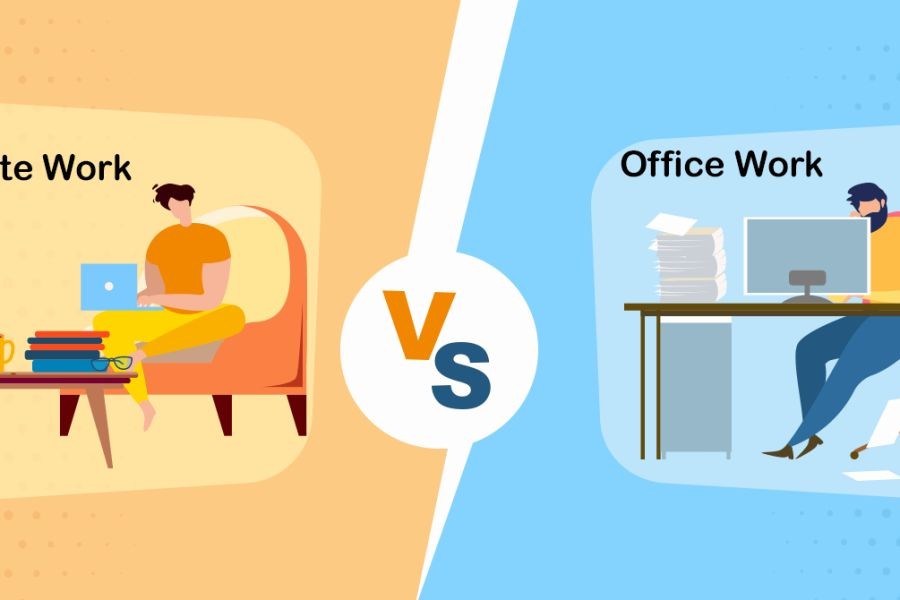In recent years, the debate over remote work versus traditional office work has intensified, particularly in Australia. As digital technology continues to evolve and global circumstances like the COVID-19 pandemic have forced companies to reconsider their operational strategies, many Australian businesses are grappling with the question: What is truly better for their workforce and bottom line? This article delves deep into the intricacies of both work models, considering the Australian context, industry trends, and local factors.
How Remote Work and Office Work Function: A Deep Dive
Remote work allows employees to perform their duties from home or any location outside the traditional office setting. Enabled by advancements in technology such as high-speed internet, cloud computing, and collaborative tools like Zoom and Slack, remote work has become increasingly viable. On the other hand, office work involves employees commuting to a fixed location, promoting face-to-face interaction and often a more structured environment.
According to the Australian Bureau of Statistics (ABS), by 2023, approximately 30% of Australians worked remotely on a regular basis, a significant increase from pre-pandemic figures. This shift has prompted companies to reassess their workspace needs, leading to a decline in commercial office space demand.
Pros and Cons Evaluation
Pros of Remote Work
- Flexibility and Work-Life Balance: Employees can tailor their work schedules to better fit personal commitments, which enhances job satisfaction and reduces stress.
- Cost Savings: Companies save on office space and resources, while employees save on commuting expenses.
- Increased Productivity: Many reports, including one from the RBA, suggest remote workers in Australia can be more productive due to fewer distractions and the ability to work during peak performance times.
Cons of Remote Work
- Isolation and Communication Challenges: Remote work can lead to feelings of isolation and hinder spontaneous communication, which may affect team dynamics and innovation.
- Tech Dependency: Reliance on technology means that any technical issues can significantly disrupt work.
- Blurred Work-Life Boundaries: The lack of a physical separation between work and home can lead to burnout.
Pros of Office Work
- Enhanced Collaboration: Physical proximity facilitates spontaneous discussions and collaboration, often leading to more creative solutions.
- Structured Environment: A dedicated workspace helps in maintaining discipline and routine.
- Access to Resources: Immediate access to office resources and technologies can improve efficiency.
Cons of Office Work
- Commuting Stress: Long commute times can lead to increased stress and reduced productivity.
- Higher Operational Costs: Maintaining office spaces involves significant expenses.
- Limited Flexibility: Fixed hours may not accommodate all employees' schedules, affecting work-life balance.
Case Studies: Real-World Applications in Australia
Case Study: Atlassian – Embracing Remote Work
Problem: Atlassian, a leading Australian software company, faced challenges in expanding globally while maintaining a cohesive work culture.
Action: The company implemented a "Team Anywhere" policy, allowing employees to work from any location worldwide. This approach leveraged advanced digital tools to ensure seamless communication and collaboration.
Result: Within a year, Atlassian reported a 30% increase in employee satisfaction and a 45% reduction in office-related costs. This policy also enabled the company to attract talent from diverse geographies, enhancing innovation.
Takeaway: Atlassian's success underscores the potential of remote work in improving employee satisfaction and operational efficiency. Australian companies can learn from this model to adapt to the evolving work landscape.
Case Study: Commonwealth Bank of Australia – The Hybrid Approach
Problem: The Commonwealth Bank of Australia needed to balance the benefits of remote work with the advantages of in-person collaboration.
Action: The bank adopted a hybrid model, allowing employees to split their time between remote work and office presence. This approach was supported by flexible work policies and investment in collaborative technologies.
Result: The hybrid model led to a 20% increase in productivity and a notable improvement in team cohesion, as reported by internal surveys.
Takeaway: The hybrid model offers a balanced solution, combining the flexibility of remote work with the collaborative benefits of office environments. Australian businesses might consider this approach to reap the advantages of both worlds.
Common Myths & Mistakes
Myth: Remote work leads to decreased productivity.
Reality: Contrary to this belief, a study by Deloitte found that remote workers often exhibit higher productivity due to fewer office distractions and flexible work hours.
Myth: Office work is obsolete in the digital age.
Reality: Despite the rise of digital tools, in-person interactions remain crucial for fostering innovation and maintaining company culture, as demonstrated by many successful Australian businesses.
Myth: Hybrid work models are too complex to manage.
Reality: With the right strategies and tools, hybrid models can be effectively managed, providing the best of both worlds.
Future Trends & Predictions
Looking ahead, the future of work in Australia is likely to be shaped by hybrid models. According to a report by McKinsey, by 2025, approximately 50% of Australian companies are expected to adopt hybrid work arrangements. This shift will require significant investment in digital infrastructure and a reimagining of workplace culture.
Additionally, as more companies embrace flexible work arrangements, there will be a growing demand for co-working spaces and hubs that offer employees a professional environment without the constraints of a traditional office.
Conclusion and Final Takeaways
- Both remote and office work have unique advantages and challenges; the best choice depends on the specific needs and goals of each organization.
- Hybrid models offer a balanced solution, combining flexibility with collaboration, making them an attractive option for many Australian businesses.
- Investing in technology and fostering a culture of trust and communication are crucial for the success of any work model.
As the work landscape continues to evolve, Australian businesses must stay agile and open to new approaches. By leveraging the insights from successful case studies and adapting to emerging trends, companies can create a productive and engaged workforce.
People Also Ask (FAQ)
How does working remotely impact businesses in Australia? AU businesses leveraging remote work report up to 25% higher productivity due to flexible hours and reduced office costs, enhancing overall efficiency (Source: Deloitte).
What are the biggest misconceptions about remote work? One common myth is that remote work decreases productivity. However, research from Deloitte shows that remote workers often perform better due to fewer distractions.
What are the best strategies for implementing a hybrid work model? Experts recommend starting with flexible work policies, investing in collaborative technology, and fostering a culture of trust and communication for successful implementation.
Related Search Queries
- Remote work trends in Australia
- Benefits of hybrid work models
- Office space demand in Australia 2024
- Productivity comparison: remote vs. office work
- Future of work in Australia
- Impact of remote work on mental health
- Hybrid work policies
- Australian companies embracing remote work
- Office work advantages
- Remote work productivity statistics
What’s your take on the future of work in Australia? Share your insights below!
































Hyttt
7 months ago